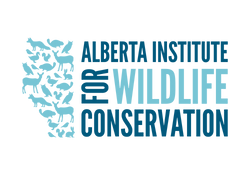👇 Psst... scroll down to fill out the details and add to your cart! 👇

Each package comprises a personalized certificate with the recipient's name, an 8 x 10 photo, and qualifies for a tax receipt.
🎁 Holiday Shipping Update: Due to the Canada Post strike, expect delays on physical sponsorships. Order by Dec 7 for the best chance of delivery. Digital sponsorships send instantly!
(Buteo Swainsoni).
Date of admission: Aug 16, 2025. Patient Number 25-1611.
Reason for admission: Physical Injury.
Patient History:
Swainson’s hawks are graceful, powerful raptors that can be found across western North America throughout the spring and summer seasons. These hawks are one of Alberta’s longest-distance migrants, traveling 10,000 km or more between their winter grounds in Argentina and their breeding grounds in Canada and the United States. Swainson’s hawks have also been known to migrate in flocks of thousands of birds, called a kettle, making for quite an impressive sight across the southwestern states and Mexico.
Swainson’s hawks will have one mate for the season, and have been known to return to the same nesting area year after year. The male hawk will build the nest, usually in a tall tree or power pole near open fields with an abundance of mice, voles, hares, insects, and snakes on which the hawks feed. Female Swainson’s hawks will lay up to five eggs, which she incubates for just over a month before the nestlings hatch. Both parents care for and feed the nestlings throughout the summer. By the time fall migration arrives, the young are full-fledged and ready to make the long journey south.
Not all Swainson’s hawks look the same. While the raptors certainly have a plumage blueprint that helps to define the species, Swainson’s hawks can be various different color-types, with feathers ranging in colour from dark brown to red, and gray to white. These birds don’t earn their adult feathers until they are around two years old, at which point they develop dark bands of feathers along the underside of their tail and at the edges of their underwing feathers.
This juvenile Swainson’s Hawk came to AIWC after they were found unable to fly or flap their wings. On intake, our animal care team identified a fracture in their right ulna - one of the long bones that connects the wrist to the elbow. Though fractured, the bone was well aligned, and the radius, another bone that runs parallel to the ulna, was not broken. Soon after, a second fracture was discovered on the patient’s keel - the large breastbone that anchors the strong flight muscles in birds. With plenty of rest and physiotherapy, the fractures have begun to heal over, and the hawk has begun flight conditioning. Given the extent of their injuries, this patient was unable to be released in time to make their fall migration. This hawk will remain in care through the winter until the spring, when their injuries will have completely healed and they can be released to join other Swainson’s hawks arriving in Alberta for the breeding season.
